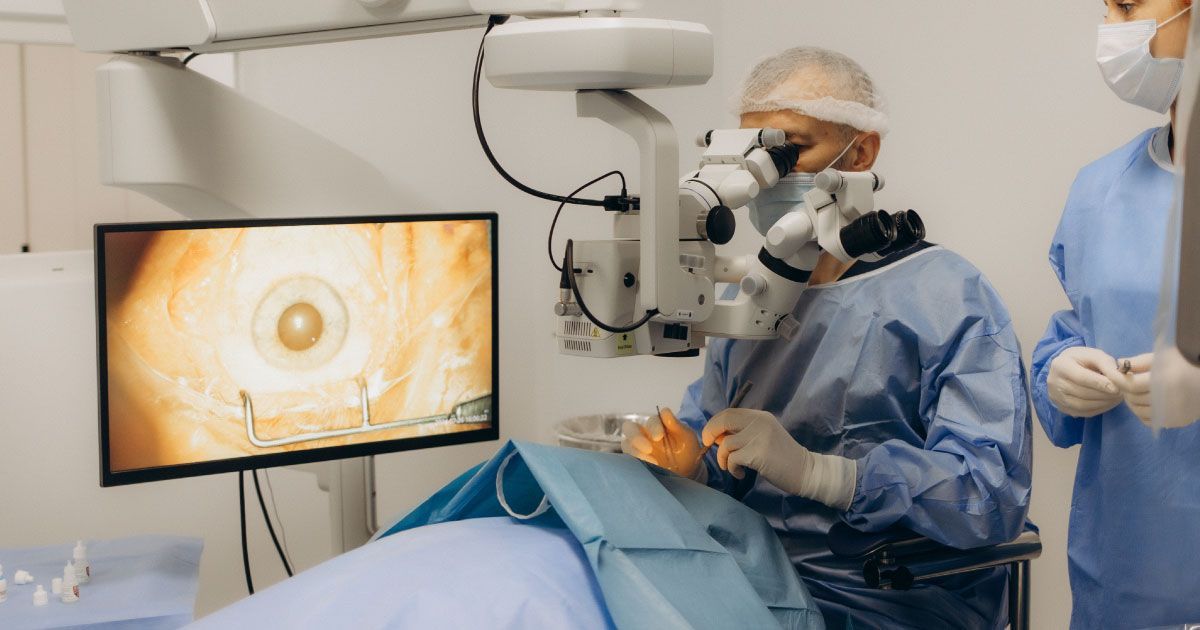Surgical Innovations in Vision Correction

Read time: 4 minutes
Vision correction surgery has undergone a remarkable transformation—from experimental corneal procedures to today’s precise, AI-assisted laser techniques. This journey reflects decades of scientific innovation, medical ingenuity, and an ever-growing understanding of the human eye. With each advancement, millions of people around the world have gained clearer, sharper vision and a better quality of life.
Laying the Groundwork: Dr. Barraquer’s Early Vision
The roots of modern refractive surgery trace back to the 1940s when Spanish ophthalmologist Dr. José Barraquer introduced the concept of altering the cornea’s shape to correct vision. Using a technique called keratomileusis, he manually removed and froze a section of the cornea, reshaping it before reimplanting it onto the eye. Though primitive by today’s standards, his foundational work laid the conceptual and surgical groundwork that future laser-based procedures would refine.
The Excimer Laser Breakthrough
A pivotal turning point arrived in the 1970s with the development of the excimer laser. Initially designed for industrial micro-machining, the laser’s ability to precisely remove organic material without causing surrounding thermal damage was a game-changer. In 1980, Dr. Rangaswamy Srinivasan demonstrated that the excimer laser could ablate human tissue with surgical precision—an insight that soon found profound applications in ophthalmology.
PRK: The First FDA-Approved Laser Vision Correction
By the late 1980s, these discoveries led to the development of Photorefractive Keratectomy (PRK)—a laser procedure that reshapes the cornea’s surface to correct refractive errors like myopia, hyperopia, and astigmatism. Approved by the FDA in 1995, PRK was the first laser eye surgery available in the United States and marked a significant shift from corrective lenses to permanent surgical solutions.
While effective, PRK required longer healing times and post-operative discomfort due to the removal of the corneal epithelium. Nonetheless, it proved the efficacy of laser correction and paved the way for more advanced techniques.
LASIK: A Game-Changer in Refractive Surgery
Laser-Assisted In Situ Keratomileusis (LASIK) quickly followed. By creating a thin corneal flap before reshaping the underlying tissue with an excimer laser, LASIK dramatically improved patient comfort, accelerated healing, and reduced recovery time. It received FDA approval in 1998 and rapidly became the most popular refractive surgery worldwide.
Over the years, LASIK has evolved through numerous enhancements:
- Bladeless LASIK: Uses femtosecond lasers for safer, more precise flap creation.
- Wavefront-guided LASIK: Tailors the laser ablation pattern to each eye’s unique optical imperfections, enhancing visual clarity and reducing side effects like halos or glare.
Expanding Options: SMILE and Implantable Lenses
Newer procedures now offer alternatives to traditional LASIK. One such innovation is SMILE (Small Incision Lenticule Extraction). This minimally invasive method removes a small lenticule of corneal tissue through a tiny incision - eliminating the need for a large flap and reducing the risk of dry eye or flap-related complications.
For patients with thin corneas, extreme prescriptions, or dry eye syndrome, Implantable Collamer Lenses (ICL) or Refractive Lens Exchange (RLE) provide excellent non-laser-based options. ICL involves placing a flexible lens inside the eye, while RLE replaces the eye's natural lens, similar to cataract surgery but tailored for refractive correction.
What’s Next: AI, Smart Lenses, and Personalized Eye Care
As technology advances, the future of vision correction is becoming even more personalized, efficient, and precise. Current research and emerging innovations include:
- AI-Powered Diagnostics: Machine learning algorithms analyze corneal shape, thickness, and wavefront data to optimize surgical planning.
- Next-Generation IOLs: Intraocular lenses now offer multifocal, extended depth-of-focus, and light-adjustable features for better post-cataract outcomes.
- Minimally Invasive Procedures: Smaller incisions and non-invasive techniques are reducing downtime and surgical risk.
- Presbyopia Solutions: Using preserved corneal lenticules from SMILE to potentially reverse age-related reading vision loss.
- Enhanced Wavefront & Topography Tools: Improved mapping systems enable ultra-customized ablation profiles.
- AI-Assisted Surgery Platforms: Real-time intraoperative guidance tools help surgeons make micro-adjustments for superior results.
The Takeaway
What began as a bold concept in a 1940s laboratory has blossomed into a diverse, high-tech field with solutions for nearly every refractive need. Today’s surgical options are faster, safer, and more tailored than ever before, and the horizon continues to expand with each innovation. As artificial intelligence, biomechanics, and surgical precision continue to evolve, so too will the ways we restore vision - bringing clarity to life in ways once thought impossible.
Share this blog post on social or with a friend:
The information provided in this article is intended for general knowledge and educational purposes only and should not be construed as medical advice. It is strongly recommended to consult with an eye care professional for personalized recommendations and guidance regarding your individual needs and eye health concerns.
All of Urban Optiks Optometry's blog posts and articles contain information carefully curated from openly sourced materials available in the public domain. We strive to ensure the accuracy and relevance of the information provided. For a comprehensive understanding of our practices and to read our full disclosure statement, please click here.


















